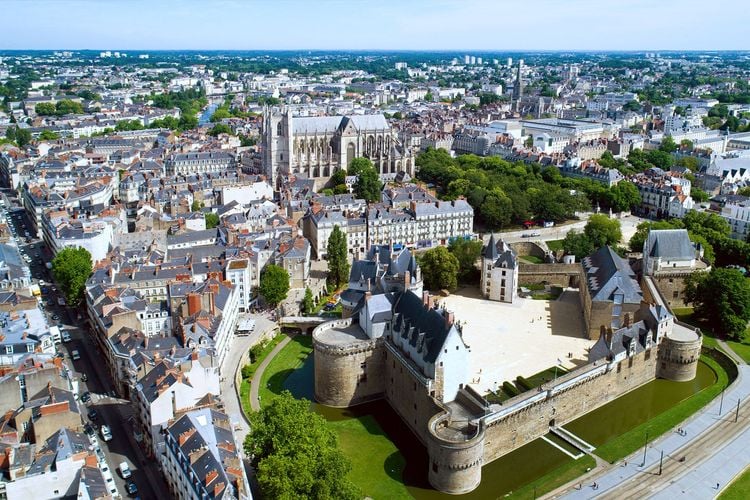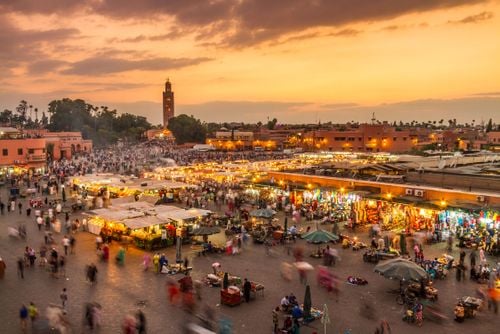The site of Saint-Pierre et Saint-Paul cathedral was originally an ancient Druid temple (in Nantes, Brittany is never far away!). Subsequently, 2 Christian religious buildings preceded the current cathedral on the same site: a first cathedral, built in the 6th century; a second Romanesque cathedral, built in the 11th century. The construction of the current Gothic building dates from the 15th century. It was originally designed by the architects Guillaume de Dammartin and Mathelin Rodier. The reconstruction of the cathedral began with the façade and gradually extended to the old Romanesque church. The façade was completed in 1481 and the towers in 1508. The nave and side aisles were also completed in the early 16th century, while the Gothic vaulting of the nave, the south arm of the transept and the flying buttresses were completed in the 17th century.
The Cathedral of Saint-Pierre and Saint-Paul in Nantes was built over more than four centuries! The first stone was laid in 1434 and the building was almost complete by the 17th century. But it wasn't until the 19th century and the demolition of the city walls to the east of the city that it was completed (1891). The cathedral was built close to the castle, on the edge of the fortifications of the medieval town. The St Peter's Gate, next to the castle, remains today. But the late Gothic building, listed as a historic monument since 1862, has suffered other setbacks more recently. The violent bombardments of 15 June 1944 caused major damage, and repairs had barely been completed when a fire swept away the roof in 1972. In 2021, another fire of criminal origin swept through the cathedral, taking with it a number of objects and paintings. Currently undergoing restoration, the church is closed to the public. However, the whiteness of the tufa stone, brought to the fore by the restoration work (2001-2008) and the imposing dimensions of the building (the great nave is 37.5 metres high, 4 metres higher than Notre Dame in Paris) make it a remarkable building. Even if you can't get inside, the cathedral is well worth a visit!
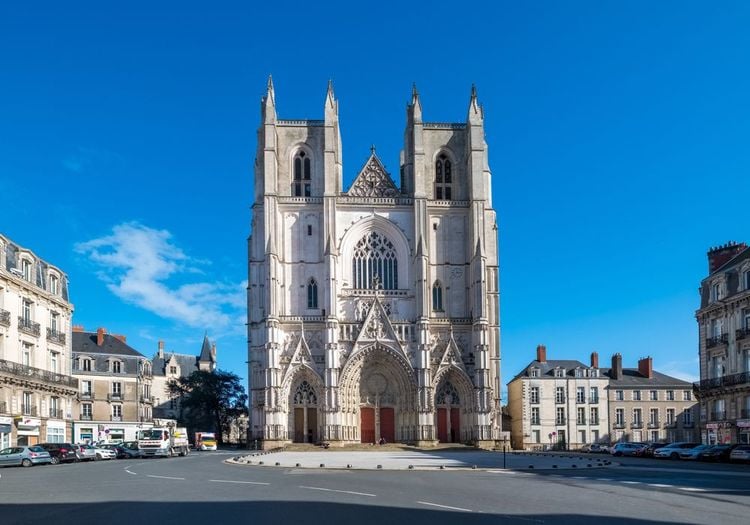
Saint-Pierre Cathedral, Nantes
- © Robert Mullan / ShutterstockA little history
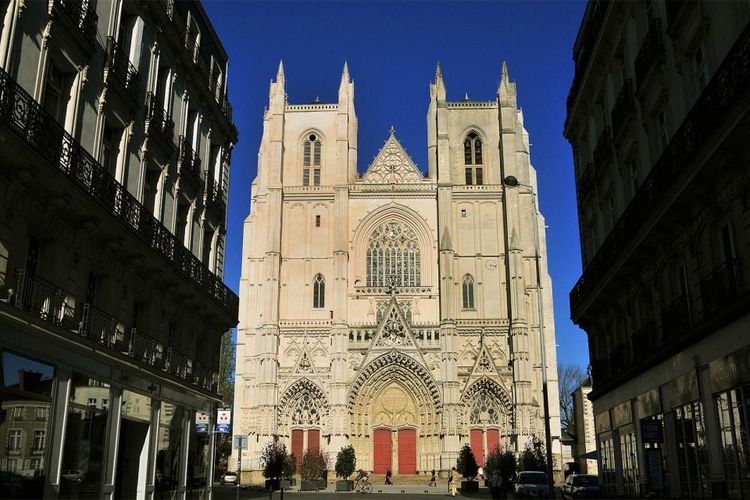
La Cathédrale Saint-Pierre, Nantes © Carlos Rodrigues / EASYVOYAGE
Unusual
During the French Revolution, the Cathedral was used as an observatory, a stable and also as a place for scientific experiments in which animals were parachuted from the stands to test their reliability.

Saint-Pierre Cathedral, Nantes © Carlos Rodrigues / EASYVOYAGE
The cathedral has had a long and eventful history, punctuated by repeated destruction and reconstruction. But it is still standing, its majestic silhouette towering over Nantes.
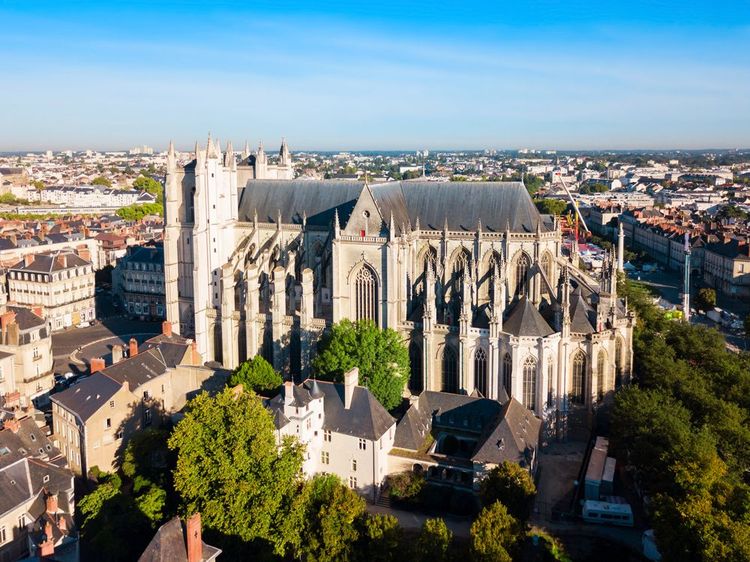
Saint-Pierre Cathedral, Nantes
- © saiko3p / ShutterstockWhat can you visit in the vicinity of the cathedral?
The Chapel of the Immaculate 📍
While the cathedral and its crypts have not been open to the public since the fire in 2020, take comfort in a visit to the ravishing Chapel of the Immaculate. Built in the 15th century, it, like the church, is a magnificent example of Gothic architecture in Nantes. Bathed in light through its superb stained-glass windows, created after the destruction of the original windows during the 1944 bombardments, the chapel's many alcoves are full of delightful surprises. The chapel, in rue Malherbes not far from the cathedral, is open to visitors on Wednesday afternoons from 2pm to 6pm. Concerts (mainly of sacred music) are regularly held there.
Our favourite accommodation near the cathedral
 Nantes
Nantes
Sublime duplex Nantes Cathedral
Located in the centre of Nantes, less than 1 km from the Botanical Gardens and an 8-minute walk from the Château des Ducs de Bretagne, the Sublime duplex Nantes Cathédrale offers accommodation with views of the city.The Statue of Louis XVI 📍
A stone's throw from the cathedral, in the centre of Place Maréchal Foch, is another notable monument in the city of Nantes. This is an imposing 28-metre-high column on which "sits" a statue of King Louis XVI, deposed during the French Revolution. The King's presence is surprising in itself, as few towns have kept a monument in his honour in a public square. Throughout the 18th century, the statue was the subject of a merciless battle between royalist supporters and republicans who worked to have it replaced by a monument celebrating the Revolution. The Place Maréchal Foch has even been the scene of bloody clashes between the two camps. The last of these took place in 1830, during Louis-Philippe's seizure of power, when ten demonstrators demanding the release of 18 prisoners were killed by soldiers. To commemorate this tragedy, a commemorative plaque was affixed to the column in 1831. It reads: "Here took place a bloody struggle between the oppressors and the oppressed on 30 July 1830. English ploughmen and labourers have commissioned this inscription as a token of their admiration for the bravery, valour and intrepidity of Nantes.
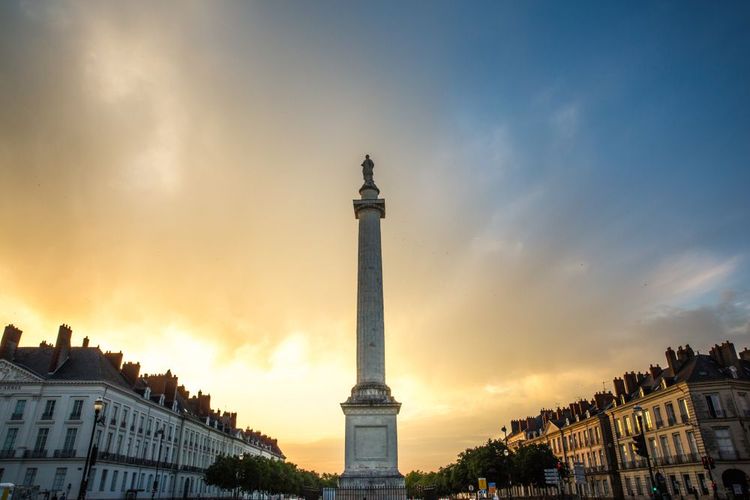
One of the few statues of Louis XVI to survive the Revolution, Nantes
- © Angelina Cecchetto / ShutterstockMore Gothic architecture
There's a bit more, I'll give you more? If alcoves and turrets are your thing, check out the Manoir de la Psallette in the impasse Saint-Laurent, a stone's throw from the cathedral, a little architectural marvel hidden from view in a square known only to regular visitors. This splendid bourgeois residence, now a listed historic monument, is not open to the public but is well worth a visit for the myriad details to be seen on its façade and its superb garden, ideal for a bucolic picnic. A little-known Nantes treasure that will delight those nostalgic for Gothic flamboyance.
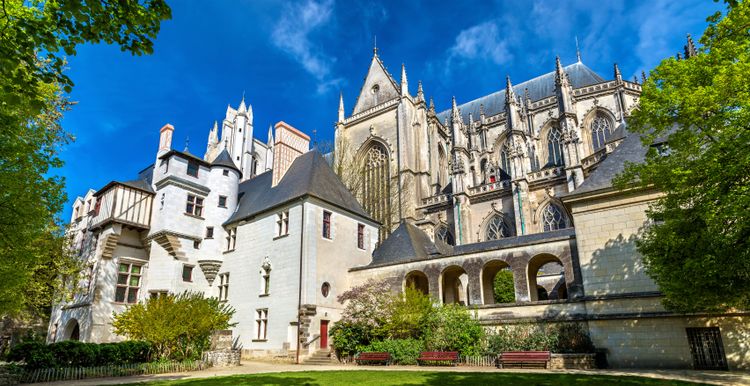
Manoir de la Psallette, Nantes © Leonid Andronov / 123RF
Have a drink at Bar la Maison
🍴 Another hidden curiosity! On the other side of Place Maréchal Foch, in an inner courtyard on Rue du Général Buat, nestles La Maison, one of Nantes' most unusual bars. The concept? Each room in the establishment is designed like a living room (kitchen, lounge, bedrooms and even toilets!). All in a retro 70s atmosphere worthy of "Chapeau melon et bottes de cuir". With a wide choice of drinks and boards to share, fans of kitsch and conviviality will feel right at home!
Rue du Général Buat also offers a wide choice of restaurants to suit all tastes. And if a drink at the bar La Maison has awakened a vintage fever in you, don't hesitate to wander around the second-hand shops that line the street. Not cheap, but well-stocked, you're sure to find a nugget to take home.
